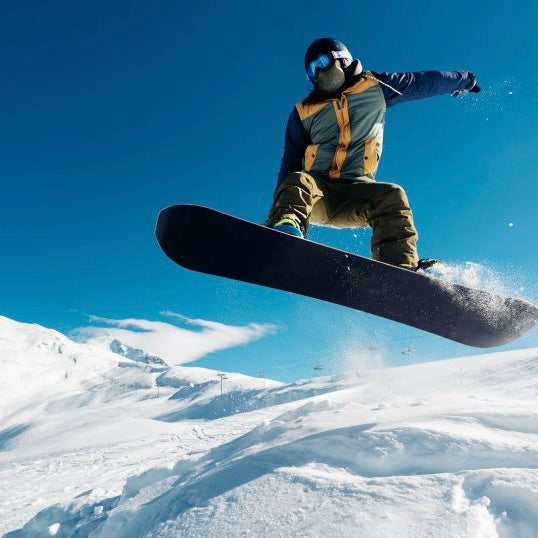A snowboarder's equipment cannot ignore boots, which must be carefully chosen to obtain comfort, protection from the cold, safety and performance. To choose the right pair of snowboard boots it is necessary to take several factors into consideration, such as:
Choose boots based on your experience level
When purchasing it will be essential to keep in mind the level of experience achieved . A beginner should opt for a flex that is in line with the index of that of the board and snowboard bindings , to have an optimal overall compatibility of the snowboard set. Therefore, snowboard boots for beginners should, as a rule, have a medium or soft degree of flex (value 3 or 4), consistent with what happens for snowboards or bindings. A medium-soft flex provides a good response, giving the right comfort and is better suited to those who have not yet developed an advanced riding level and still make many mistakes.
The right flex for every riding style
The degree of flex of snowboard boots can be classified into soft , intermediate and firm . It is generally possible to associate the degree of flex as well as the technical level of the rider with the different areas of use, according to the following combinations:
- Park and freestyle boots : ideal soft/soft flex, to obtain maximum sensitivity when practicing fluid styles. The cushioning is designed to absorb impacts for the benefit of the joints;
- All mountain boots : ideal intermediate flex. In this case the degree of flex is quite versatile, i.e. with a balanced relationship between support and sensitivity;
- Freeride and backcountry boots : ideal medium/stiff flex. The rider will thus be able to benefit from great reactivity and very fast transmission from the foot to the board. Through a solid structure of the shell and the cushioning of the midsole, adequate protection of the joints is also obtained;
- Race and carving boots : ideal rigid flex.
Summary table of the ideal flex categories and indices in relation to the area of use
| Usage | Ideal Flex (category) | Ideal Flex (numeric index) |
|---|---|---|
| Park / Freestyle | soft | 2 - 5 |
| All Mountain | medium | 5 - 7 |
| Freeride / Backcountry | medium - stiff | 5 -10 |
| Race / Carving | rigid | 7 - 10 |
How to choose the right size of snowboard boots
Let's now move on to one of the most important and useful topics of this guide: the choice of size. When you buy new boots, when you put them on, you must immediately feel a certain comfort , taking into account that you are not faced with ordinary sneakers anyway. The snowboard boot suited to your size should not hurt but should fit and keep your foot secure. When a boot is still new it could cause some initial discomfort due to the flat that will still have to take the shape of the foot.
Let's see step by step how to proceed and some advice.
When preparing to choose the right size it will be necessary to measure the length of the foot , taking into account not only the profile but also the transverse arch of the foot and any disturbances during the support phase.
Then you will proceed with putting on the boot, tightening it appropriately according to your needs. The right size can be identified if when standing the big toe touches the inner shoe and this does not happen when bent over. The correct grip on the heel is assessed by applying pressure on the toes: the boot should not move more than a centimeter.
A good rule is to keep the boot closed and try to take a few steps before making a final judgement. It would be preferable not to limit yourself to trying just a couple of models but also to range between one brand and another, as the fit can significantly vary .
Finally, measuring your boots by wearing technical socks , specific for snowboards, can help you better identify the correct size, as well as ensuring correct protection for your foot when you use them.
By clicking on the following link you can view a useful size and measurement conversion table for snowboard boots in the different numbering systems used (European, USA, UK and Mondopoint in centimeters) which will make it easy for you to find the right size during your online purchase .
Choosing the right boots for the type of binding and for the board (compatibility)
Last but not least, when choosing boots the problem also arises of identifying the models compatible with the bindings and consequently with the board. When you already have a board and bindings it would be advisable to combine the new boots with the same degree of flex as the first ones. Another good starting point is to check that the size of the boot is compatible with that of the binding. When wearing the toe and heel they must not protrude from the board but always remain close to the edges.
A medium flex , however, between 5 and 6, is well suited to all boots for intermediate level snowboarders and for those who have not yet defined their surfing style. Although this is not a fixed rule, taking your skill as a starting point still represents an excellent way to avoid making risky or incorrect purchases.
The right flex for every riding style
The degree of flex of snowboard boots can be classified into soft , intermediate and firm . It is generally possible to associate the degree of flex as well as the technical level of the rider with the different areas of use, according to the following combinations:
- Park and freestyle boots : ideal soft/soft flex, to obtain maximum sensitivity when practicing fluid styles. The cushioning is designed to absorb impacts for the benefit of the joints;
- All mountain boots : ideal intermediate flex. In this case the degree of flex is quite versatile, i.e. with a balanced relationship between support and sensitivity;
- Freeride and backcountry boots : ideal medium/stiff flex. The rider will thus be able to benefit from great reactivity and very fast transmission from the foot to the board. Through a solid structure of the shell and the cushioning of the midsole, adequate protection of the joints is also obtained;
- Race and carving boots : ideal rigid flex.
Summary table of the ideal flex categories and indices in relation to the area of use
| Usage | Ideal Flex (category) | Ideal Flex (numeric index) |
|---|---|---|
| Park / Freestyle | soft | 2 - 5 |
| All Mountain | medium | 5 - 7 |
| Freeride / Backcountry | medium - stiff | 5 -10 |
| Race / Carving | rigid |
7 - 10 |

